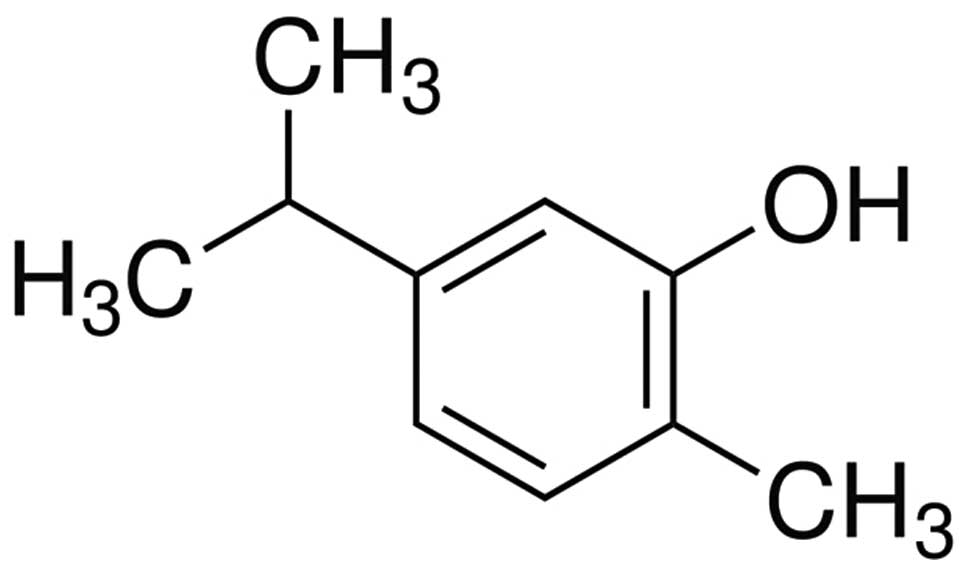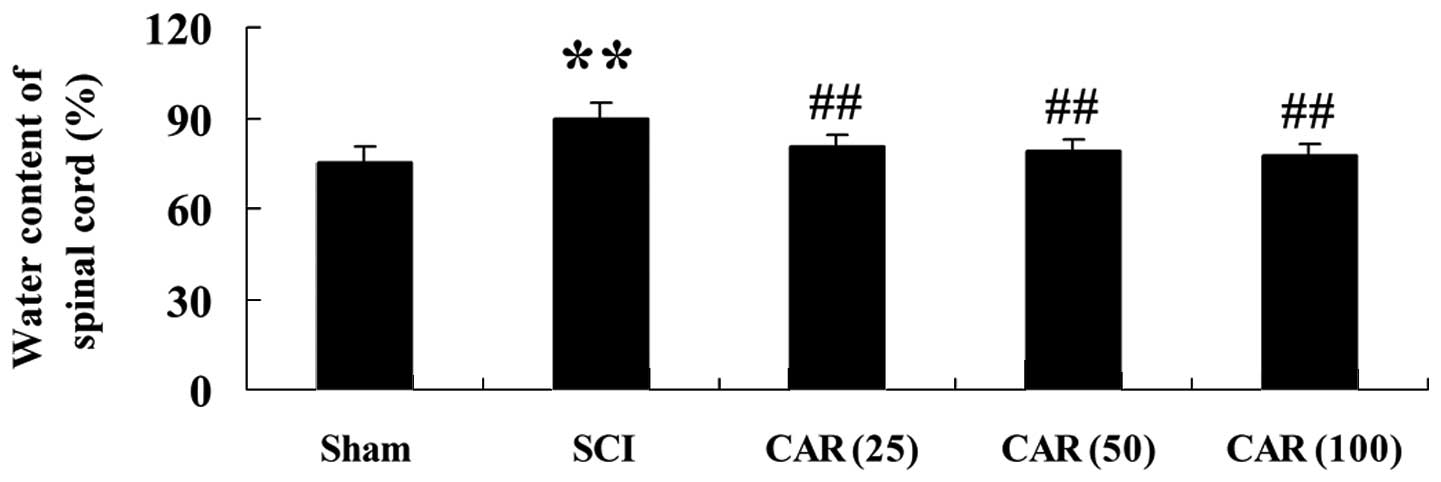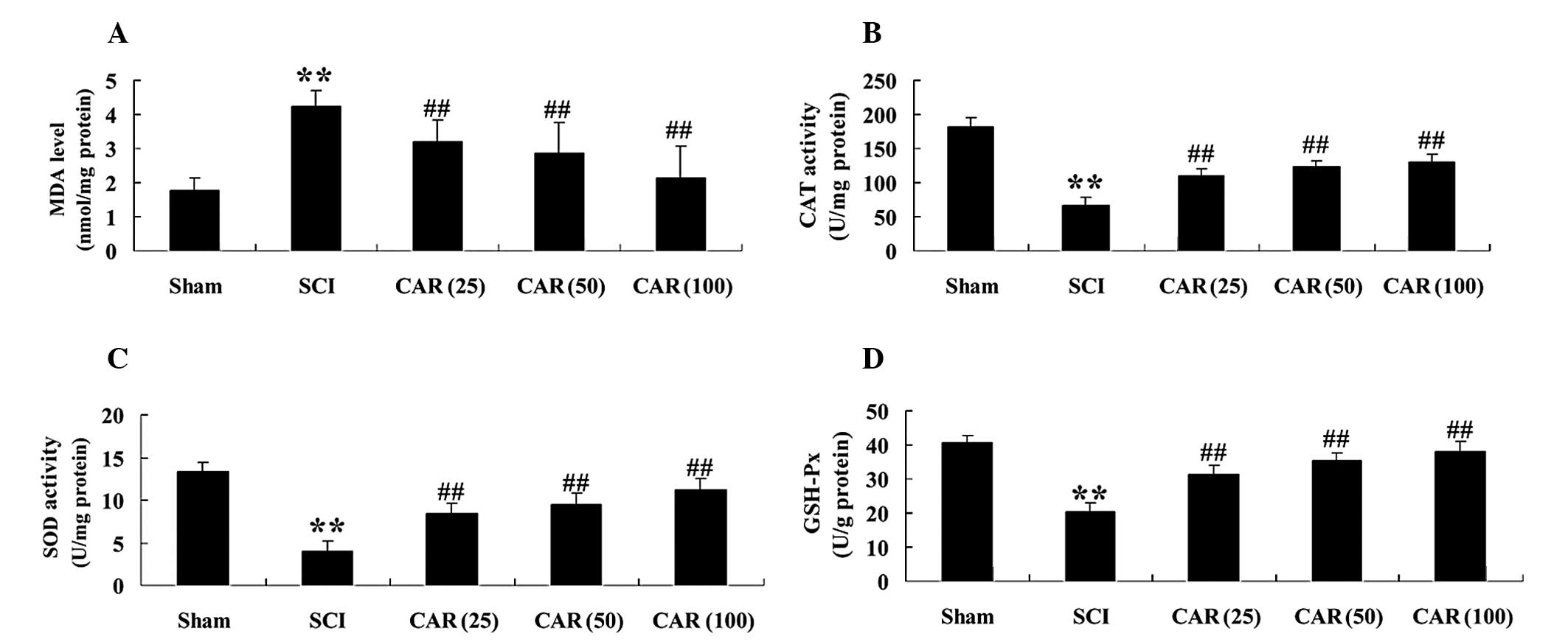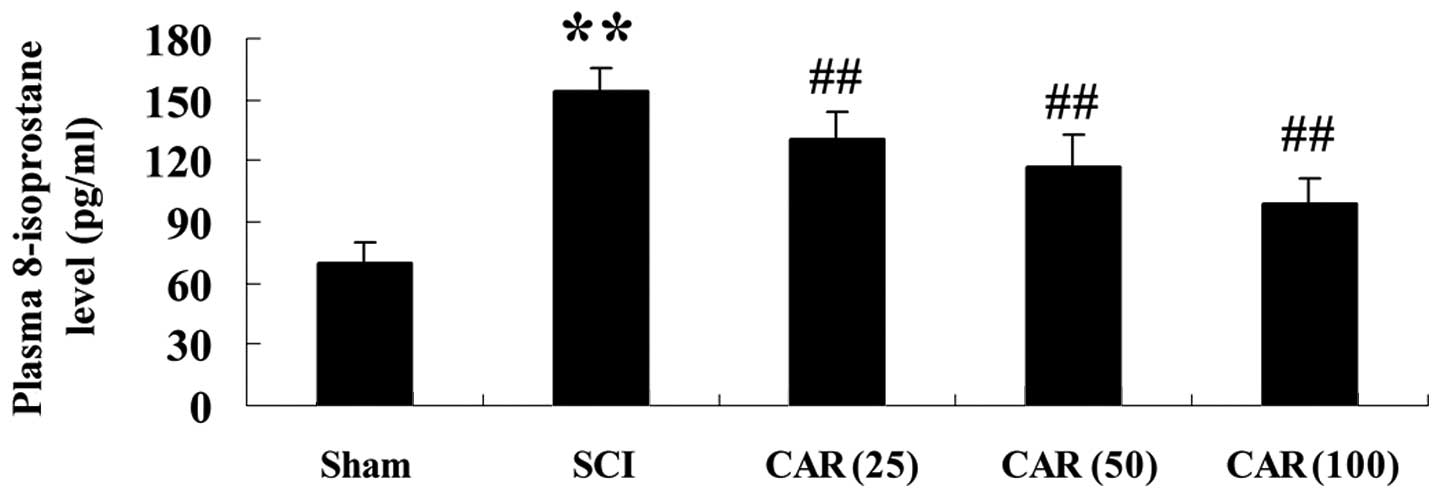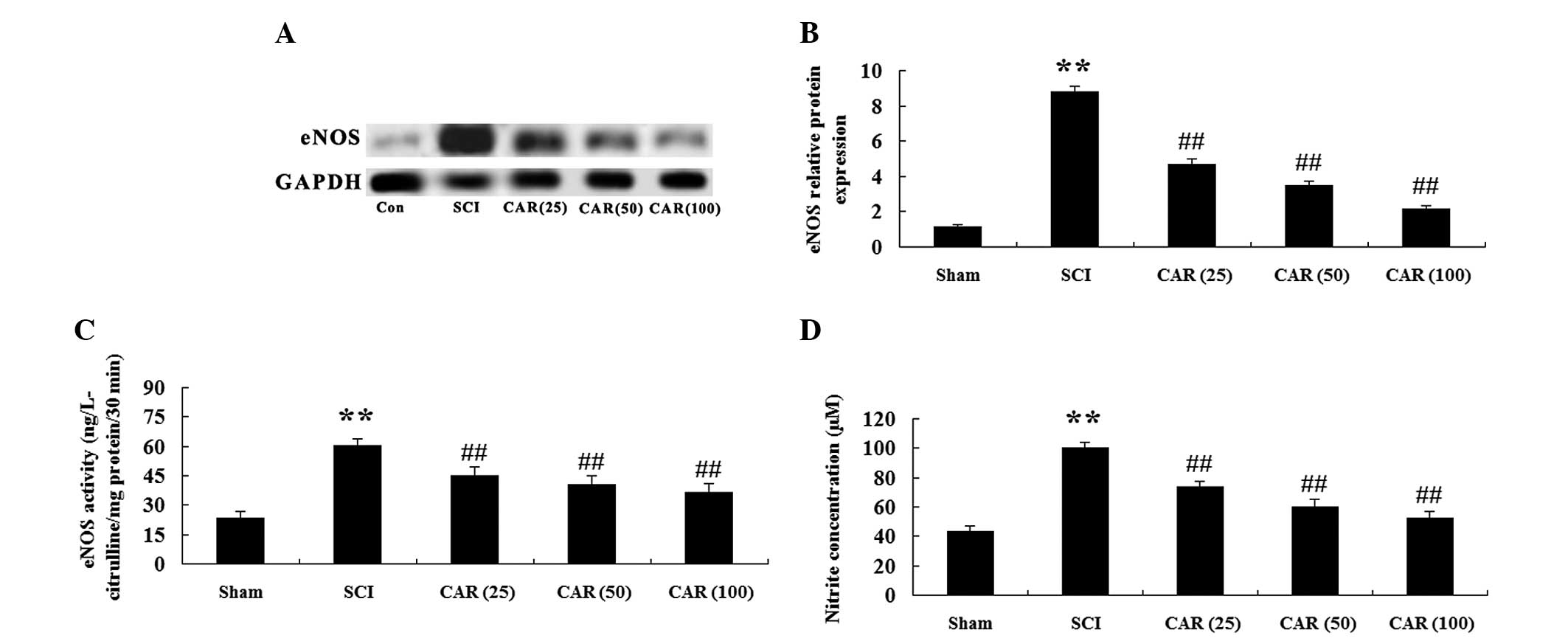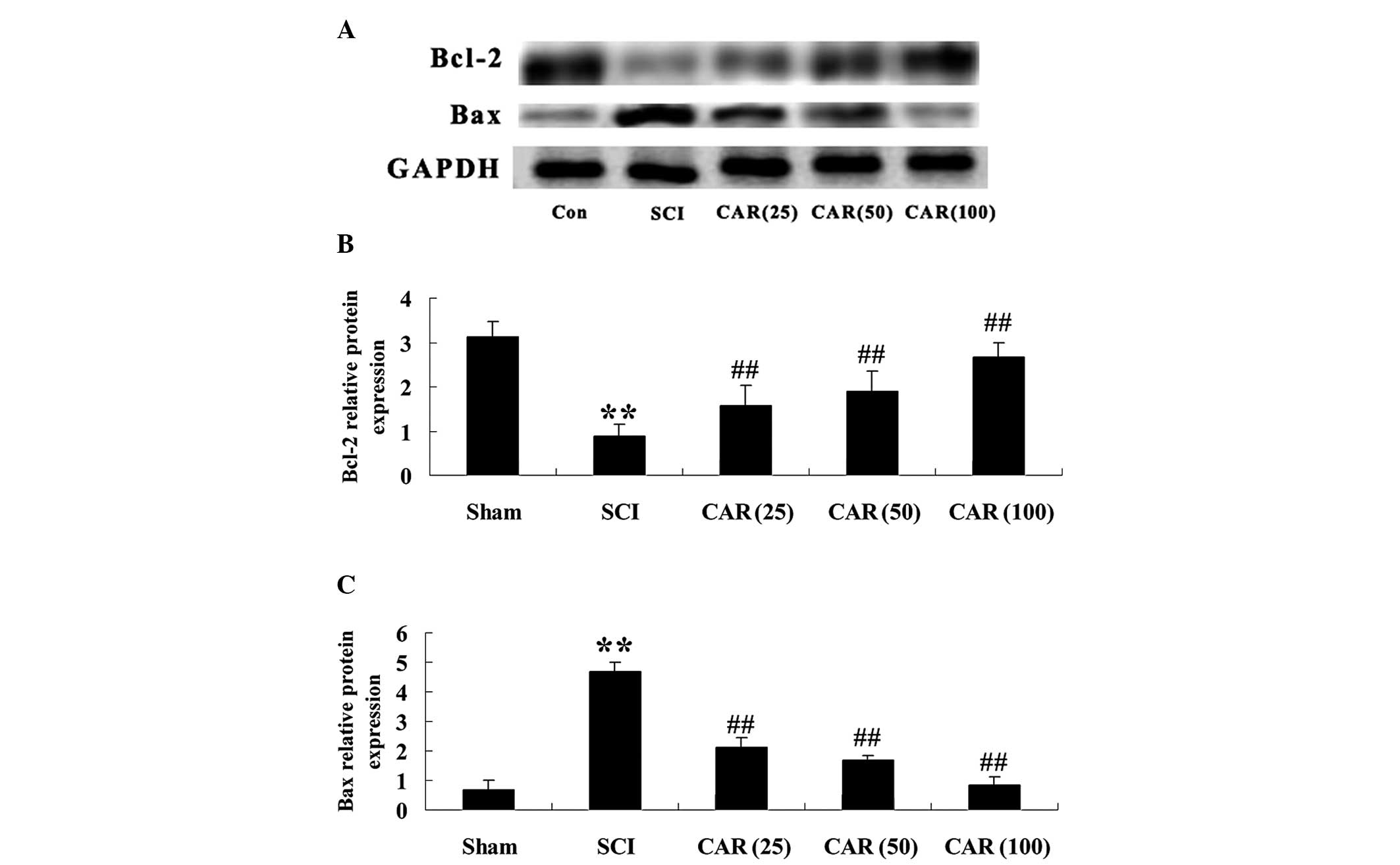|
1
|
Baur JA and Sinclair DA: Therapeutic
potential of resveratrol: the in vivo evidence. Nat Rev Drug
Discov. 5:493–506. 2006. View
Article : Google Scholar : PubMed/NCBI
|
|
2
|
Takenaga M, Ohta Y, Tokura Y, et al:
Lecithinized superoxide dismutase (PC-SOD) improved spinal cord
injury-induced motor dysfunction through suppression of oxidative
stress and enhancement of neurotrophic factor production. J Control
Release. 110:283–289. 2006. View Article : Google Scholar
|
|
3
|
Fu J, Fan HB, Guo Z, et al: Salvianolic
acid B attenuates spinal cord ischemia-reperfusion-induced neuronal
injury and oxidative stress by activating the extracellular
signal-regulated kinase pathway in rats. J Surg Res. 188:222–230.
2014. View Article : Google Scholar : PubMed/NCBI
|
|
4
|
Zhou YF, Li L, Feng F, et al: Osthole
attenuates spinal cord ischemia-reperfusion injury through
mitochondrial biogenesis-independent inhibition of mitochondrial
dysfunction in rats. J Surg Res. 185:805–814. 2013. View Article : Google Scholar : PubMed/NCBI
|
|
5
|
Diaz-Ruiz A, Vergara P, Perez-Severiano F,
et al: Cyclosporin-A inhibits constitutive nitric oxide synthase
activity and neuronal and endothelial nitric oxide synthase
expressions after spinal cord injury in rats. Neurochem Res.
30:245–251. 2005. View Article : Google Scholar : PubMed/NCBI
|
|
6
|
Guimarães AG, Xavier MA, de Santana MT, et
al: Carvacrol attenuates mechanical hypernociception and
inflammatory response. Naunyn Schmiedebergs Arch Pharmacol.
385:253–263. 2012. View Article : Google Scholar
|
|
7
|
Guimarães AG, Oliveira GF, Melo MS, et al:
Bioassay-guided evaluation of antioxidant and antinociceptive
activities of carvacrol. Basic Clin Pharmacol Toxicol. 107:949–957.
2010. View Article : Google Scholar : PubMed/NCBI
|
|
8
|
Yu W, Liu Q and Zhu S: Carvacrol protects
against acute myocardial infarction of rats via anti-oxidative and
anti-apoptotic pathways. Biol Pharm Bull. 36:579–584. 2013.
View Article : Google Scholar : PubMed/NCBI
|
|
9
|
Deng W, Lu H and Teng J: Carvacrol
attenuates diabetes-associated cognitive deficits in rats. J Mol
Neurosci. 51:813–819. 2013. View Article : Google Scholar : PubMed/NCBI
|
|
10
|
Ravikumar R, Fugaccia I, Scheff SW, Geddes
JW, Srinivasan C and Toborek M: Nicotine attenuates morphological
deficits in a contusion model of spinal cord injury. J Neurotrauma.
22:240–251. 2005. View Article : Google Scholar : PubMed/NCBI
|
|
11
|
Basso DM, Beattie MS, Bresnahan JC, et al:
MASCIS evaluation of open field locomotor scores: effects of
experience and teamwork on reliability. Multicenter Animal Spinal
Cord Injury Study. J Neurotrauma. 13:343–359. 1996. View Article : Google Scholar : PubMed/NCBI
|
|
12
|
Springer JE, Azbill RD and Knapp PE:
Activation of the caspase-3 apoptotic cascade in traumatic spinal
cord injury. Nat Med. 5:943–946. 1999. View
Article : Google Scholar : PubMed/NCBI
|
|
13
|
Sharma HS, Gordh T, Wiklund L, Mohanty S
and Sjöquist PO: Spinal cord injury induced heat shock protein
expression is reduced by an antioxidant compound H-290/51. An
experimental study using light and electron microscopy in the rat.
J Neural Transm. 113:521–536. 2006. View Article : Google Scholar : PubMed/NCBI
|
|
14
|
Harman D: Free radical theory of aging: an
update: increasing the functional life span. Ann NY Acad Sci.
1067:10–21. 2006. View Article : Google Scholar : PubMed/NCBI
|
|
15
|
Die J, Wang K, Fan L, Jiang Y and Shi Z:
Rosuvastatin preconditioning provides neuroprotection against
spinal cord ischemia in rats through modulating nitric oxide
synthase expressions. Brain Res. 1346:251–261. 2010. View Article : Google Scholar : PubMed/NCBI
|
|
16
|
Nakajima H, Uchida K, Yayama T, et al:
Targeted retrograde gene delivery of brain-derived neurotrophic
factor suppresses apoptosis of neurons and oligodendroglia after
spinal cord injury in rats. Spine (Phila Pa 1976). 35:497–504.
2010. View Article : Google Scholar
|
|
17
|
Shacka JJ and Roth KA: Regulation of
neuronal cell death and neurodegeneration by members of the Bcl-2
family: therapeutic implications. Curr Drug Targets CNS Neurol
Disord. 4:25–39. 2005. View Article : Google Scholar : PubMed/NCBI
|



